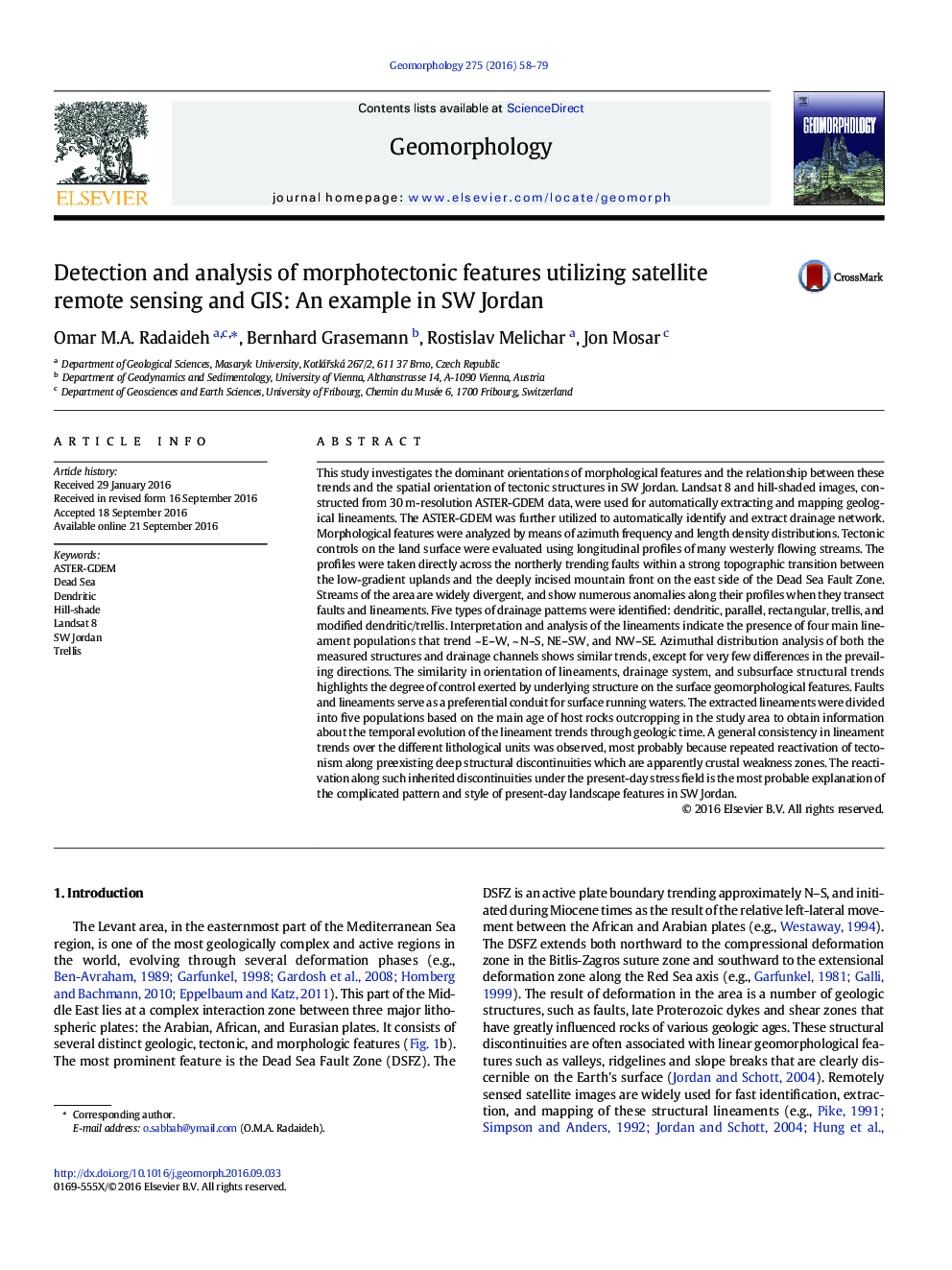| کد مقاله | کد نشریه | سال انتشار | مقاله انگلیسی | نسخه تمام متن |
|---|---|---|---|---|
| 4683878 | 1635374 | 2016 | 22 صفحه PDF | دانلود رایگان |

• Automatic extraction of lineament and drainage features
• Multi-illuminated hill-shading procedures
• Streams are widely divergent, and showing numerous anomalies along their profiles
• Knickpoints and hanging valleys indicate tectonic control.
• Control exerted by underlying structures on the geomorphologic features.
This study investigates the dominant orientations of morphological features and the relationship between these trends and the spatial orientation of tectonic structures in SW Jordan. Landsat 8 and hill-shaded images, constructed from 30 m-resolution ASTER-GDEM data, were used for automatically extracting and mapping geological lineaments. The ASTER-GDEM was further utilized to automatically identify and extract drainage network. Morphological features were analyzed by means of azimuth frequency and length density distributions. Tectonic controls on the land surface were evaluated using longitudinal profiles of many westerly flowing streams. The profiles were taken directly across the northerly trending faults within a strong topographic transition between the low-gradient uplands and the deeply incised mountain front on the east side of the Dead Sea Fault Zone. Streams of the area are widely divergent, and show numerous anomalies along their profiles when they transect faults and lineaments. Five types of drainage patterns were identified: dendritic, parallel, rectangular, trellis, and modified dendritic/trellis. Interpretation and analysis of the lineaments indicate the presence of four main lineament populations that trend ~ E–W, ~ N–S, NE–SW, and NW–SE. Azimuthal distribution analysis of both the measured structures and drainage channels shows similar trends, except for very few differences in the prevailing directions. The similarity in orientation of lineaments, drainage system, and subsurface structural trends highlights the degree of control exerted by underlying structure on the surface geomorphological features. Faults and lineaments serve as a preferential conduit for surface running waters. The extracted lineaments were divided into five populations based on the main age of host rocks outcropping in the study area to obtain information about the temporal evolution of the lineament trends through geologic time. A general consistency in lineament trends over the different lithological units was observed, most probably because repeated reactivation of tectonism along preexisting deep structural discontinuities which are apparently crustal weakness zones. The reactivation along such inherited discontinuities under the present-day stress field is the most probable explanation of the complicated pattern and style of present-day landscape features in SW Jordan.
Journal: Geomorphology - Volume 275, 15 December 2016, Pages 58–79